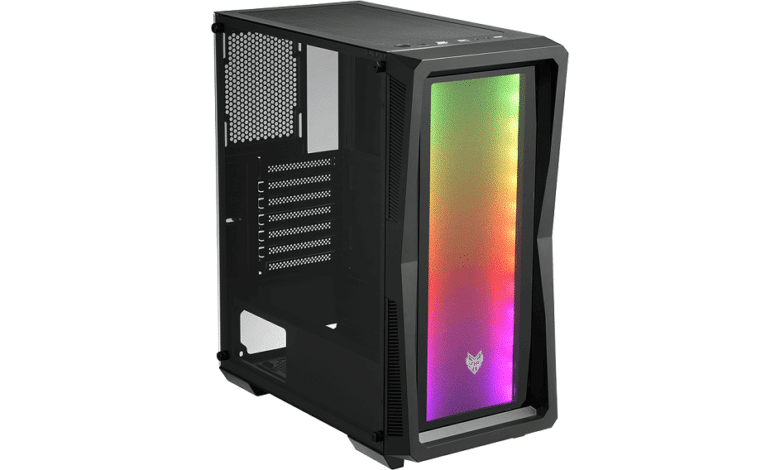
The FSP Group is a manufacturer of PC components founded in Taiwan in 1993. For a long time, power supplies for the OEM, consumer and data center market were the main business of the FSP Group. Especially owners of PCs from the manufacturer Medion should recognize the logo of the FSP Group. Since FSP already supplies the consumer market with power supplies, it makes sense to also include computer housings in the portfolio.
Without much notice, FSP introduced the FSP CMT212 in August 2021. Behind this product name is a new midi tower with the same layout as the CMT211, but with a different front panel design instead. Thus, there is optionally a variant with mesh front (CMT211A) and a variant with tempered glass on the front (CMT212G), each of which should convince with four pre-installed fans. Regardless of the version, however, there is always a Tempered Glass side panel and a digitally addressable light bar in the front panel. Furthermore, the manufacturer speaks of a high-quality and robust construction in the product description. We are testing the CMT211G today, which is the most expensive variant with an MSRP of €67.90.
Technical details
| Model: | FSP CMT212G |
| Housing Type: | ATX |
| Dimensions: | 210 mm (W) x 441 mm (H) x 410 mm (D) |
| Weight: | 5.00 kg |
| Material: | Steel, plastic, tempered glass |
| Color: | Black |
| Front connectors | 1x USB 3.0 Type-A, 2x USB 2.0 Type-A, 1x headphone, 1x microphone |
| Drive bays: | 1x 3.5″ 1x 3.5″/ 2.5″ (internal) 1x 2.5″ (internal) |
| Expansion slots: | 7x horizontal |
| Form Factors: | ATX, mATX, ITX |
| Ventilation: | Front: 3x 120 mm (3x pre-installed). Rear: 1x 120 mm (1x pre-installed) Lid: 2x 120 mm |
| Radiators: | Front: 1x 360 mm or 1x 240 mm Rear: 1x 120 mm |
| Max. CPU cooler height: | 160 mm |
| Max. Graphics card length: | 320 mm |
| Max. Net part length: | 150 mm (with HDD cage) 190 mm (without HDD cage) |
| Cable management space: | 21 mm |
| Price: | € 1.49 * |
| Features: | Dust filter, cable management, tempered glass, ARGB lighting with control unit |
Scope of delivery
Delivered is the FSP CMT212G in a simple cardboard box made of brown cardboard. So that you don’t have to buy a pig in a poke, the manufacturer prints a product picture on the box and also gives the most important technical data on the outside. Inside, the midi tower is protected from damage or scratches by a plastic film and normal styrofoam blocks. However, the blocks are kept quite thin, which could lead to transport damages. There are also additional protective films on all glass elements. The included accessories were stowed in a bag and lashed inside by means of cable ties. All necessary screws, a mainboard speaker and five cable ties are present. Also included are three dust filters, two PCI slot bezels, four pre-installed case fans and an RGB light bar in the front panel.
External impression
In terms of exterior design, the FSP CMT211G holds back a bit more than the CMT211 when powered off. The centerpiece of the 212G is a viewing window made of tempered glass with a printed manufacturer logo, which is surrounded by a wide frame made of black plastic. FSP has installed two RGB strips on both sides behind the display window. There are also two large vents for the front fans on both sides of the front panel. Behind the front panel, you’ll also find a white dust filter with magnetic strips and the three pre-installed 120-millimeter fans.
The lid is meant to further improve the airflow inside and consists of a large ventilation grille with mounting rails for two 120-millimeter fans. To protect against dust and unify the look, FSP has placed a black magnetic dust filter above the grille. In the front area of the lid, the I/O panel should then be mentioned. It has three USB ports (1x USB 3.0 Type-A, 2x USB 2.0 Type-A), connections for headphones as well as microphone and two buttons for power and the LED control. According to FSP, the final version will have two USB 3.0 ports.
The side panels have been designed differently on the CMT212G. To better show off the RGB lighting, FSP has opted for a lightly tinted Tempered Glass side window on the left side panel. The pane is four millimeters thick and rests on four rubber rings to which four flat thumbscrews are attached. The right side panel is made of steel and has just enough stability. Here, the connection to the body is made by two thumbscrews on the back.
At the back, it shows a usual appearance for a midi tower according to current standards. The power supply is placed in the lower part of the chassis. Above it we find seven perforated slot bezels, only one of which is reusable, and at the very top the fourth pre-installed 120-millimeter fan has been attached. By using mounting rails, this can also be moved steplessly if necessary.
The CMT212G gets a secure stand via four case feet made of simple as well as black colored plastic. Additionally, the feet are covered with a rubber strip. As a dust filter for the power supply, FSP relies on a simple filter mat made of mesh, which has to be hooked into steel straps for attachment. On the other hand, another interesting feature can be found in the front base area. Various mounting points and screws can be seen there. This suggests that the HDD can be moved or removed inside.
Interior impression
Since we’ve covered everything on the outside, let’s just turn to the interior. FSP relies on a tried and true layout for the CMT212G, which consists of a large main chamber and a small power supply chamber. The main chamber is very open in design and offers space for an ATX mainboard as well as long graphics cards. The mainboard tray has a large cutout for changing CPU cooler backplates and a total of five openings for routing cables. Since there are no hard drive cages or the like in the front area of the interior, the three pre-installed 120-millimeters can convey fresh air into the interior unhindered.
The PSU compartment houses the PSU as well as a modular PSU cage. A cover attached above it accordingly hides the view of a messy cable nest. Like the motherboard tray, FSP has also equipped the cover with four cable management openings. In addition, the manufacturer’s logo has been painted on the side of the power supply tunnel.
The back of the motherboard tray is less than spectacular. There is a total of 21 millimeters of space for cables and numerous tabs for attaching cable ties. In the lower area, you then find the mounting position for the power supply, which rests on thin strips of foam rubber, and the modular hard drive cage. This can be moved or completely removed.
Hard disks is a good keyword at this point. The FSP CMT212G offers space for a total of three data carriers. Thus, two 3.5″ or one 2.5″ and one 3.5″ HDD can be accommodated in the HDD cage. Furthermore, a 2.5″ SSD can be placed underneath the top of the PSU cage. Since the PSU cage is connected to the body via rubber rings, a slight decoupling takes place.
The quality of the exterior and interior workmanship as well as the finish correspond to the targeted price range. At least in our test sample, no scratches, runners or other workmanship flaws were visible. There were also no sharp edges that you could cut yourself on.
System installation in the FSP CMT212G
Now we come to the system build. For hardware, we’re using an AMD Ryzen 5 1400 on a MSI B350 PC Mate with 16GB Crucial Ballistix Sport LT gray DDR4-2666. The Ryzen is cooled by an LC-Power Cosmo Cool LC-CC-120-RGB and is overclocked to 3.8 GHz (1.25V). A GTX 1060 6GB from Gigabyte AORUS is responsible for the image output. The power supply is handled by the fully modular LC-Power LC550 V2.31 Platinum with an 80 Plus Platinum efficiency rating.
With the spacious interior and pre-installed standoffs, installation of all components was quickly completed. Since the CMT212G has a relatively shallow depth, our hardware fills the interior very well. The space behind the motherboard and the sensibly placed cable management openings also allowed the system to be neatly wired. However, you shouldn’t necessarily stack the cables. Completely assembled, the test system looks very neat and tidy.
The hardware compatibility of the FSP CMT212G is good, but overall lies within the average of a normal midi tower. Thus, there is 160 millimeters of space available for CPU coolers and 320 millimeters for graphics cards. This is sufficient for many, but not all components on the market. For cooling the CPU, you can optionally place a 360 AiO water cooler in the front. In the standard configuration, you can also install a power supply with a length of 150 millimeters. If you do without the HDD cage, there is 190 millimeters of space for the PSU.
FSP installs four 120 millimeters in the CMT212G ex works. These are all composed of a black frame and a white fan with nine fan blades. The connection is always made via a black 3-pin cable including a built-in splitter together. This would theoretically allow you to run all four fans via one motherboard connector. The maximum speed of the fans is 1000 rpm. Thus, they act quite inconspicuously, but they are still slightly audible.
Finally, we come to the temperatures that were reached in the FSP CMT212G. During the stress test, Prime95 and FurMark were run for 15 minutes at a room temperature of 24°C. Furthermore, the test was performed with two different fan speeds.
Scenario |
Temperature |
| CPU: 50% PWM (1100 rpm) GPU: 50% PWM (1650 rpm) 4x 120 mm, 50% at 650 rpm |
CPU: 81 °C GPU: 81 °C |
| CPU: 50% (1100 rpm) GPU: 50% PWM (1650 rpm) 4x 120 mm, 100% at 100 rpm |
CPU: 75 °C GPU: 78 °C |
| CPU: 50% (1100 rpm) GPU: 50% PWM (1650 rpm) 4x 120 mm, 100% at 100 rpm Without front panel |
CPU: 67 °C GPU: 69 °C |
The fact that the front panel on the CMT212G is made entirely of glass and the only ventilation has to be through the small openings on the left and right sides of the front panel is directly reflected in the temperatures. Even at full fan speed, temperatures in the 70s are reached. This is not necessarily bad for this worst-case scenario, but the hardware used can by no means be called high-end. If you remove the front panel, the maximum values are reduced by almost 10 degrees each. This shows how restrictive the tempered glass is. If you place a high value on airflow, we would rather advise the CMT212A with mesh front.
Lighting options in the FSP CMT212G
As it should be for a modern case, of course, RGB lighting may not be missing in the CMT212G. FSP has implemented this via two digitally addressable RGB bars placed on the back of the front panel. The light shines very well in the direction of the observer due to the white dust filter. The bars are controlled via the built-in circuit board in the I/O panel and can also be operated via a button there. By default, the control unit has 10 colors or color combinations and must be powered by the power supply via a SATA connector. If you prefer to control the colors via your mainboard, this is also possible. The lightbars can be controlled via a 3-pin 5V RGB header and can be supplemented with additional RGB elements with the appropriate connector.
Summary of the FSP CMT212G
Now let’s get to the conclusion of this review on the FSP CMT212G midi tower. The CMT212G basically has a lot to offer for its price of €67.90 (MSRP). For example, it comes with three dust filters, a Tempered Glass side window and front panel, and two digitally-addressable RGB bars in the front. Combined with the white dust filter, this creates an extraordinary look. In addition, this midi tower could convince us with its spacious interior, which also offers space for somewhat stronger or larger components and makes cabling very easy. The overall package is rounded off by the modular and decoupled HDD cage as well as the four pre-installed case fans.
However, we did not like the relatively thin thickness of the Styrofoam blocks inside the packaging. This could easily lead to possible damage during transport. In addition, the glass on the front greatly affects the airflow, which in turn leads to higher temperatures. The build quality and stability of the CMT212G didn’t blow us away, but they are basically okay and on par with many other cases in this price range.
For a price of € 18.70 , the FSP CMT212G offers a solid overall package and basically quite a bit of features. However, the price range between 60€ and 70€ is highly competitive and full of similarly equipped midi towers, which all have their advantages and disadvantages. If, in addition, a little less emphasis is placed on the appearance and a little more on the airflow, we definitely recommend rather reaching for the CMT212A with mesh front.
FSP CMT212G
Workmanship
Structure
Features
Cooling
Value for money
80/100
The FSP CMT212G is a solidly equipped midi tower with average build quality and room for a lot of hardware. However, the tempered glass front panel limits the airflow quite a bit.






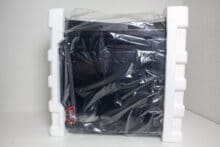
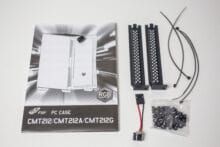

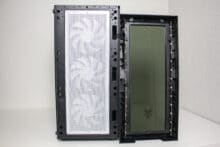







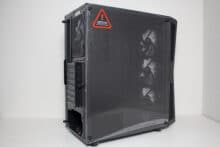







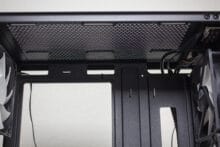
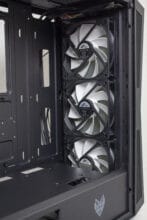




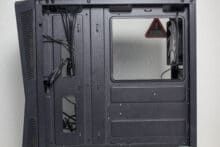
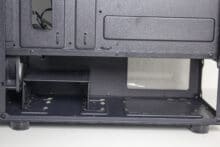

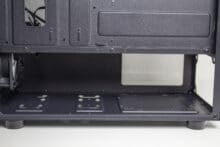

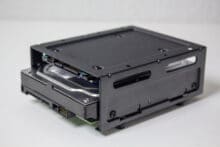



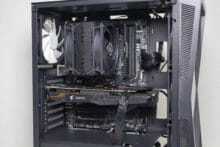


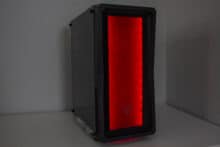





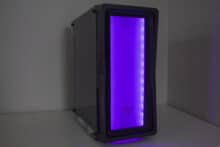


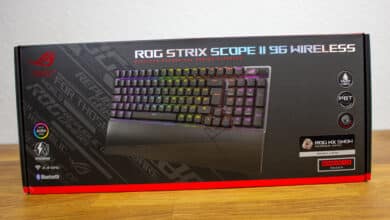



No replies yet
Neue Antworten laden...
Neues Mitglied
Beteilige dich an der Diskussion in der Basic Tutorials Community →